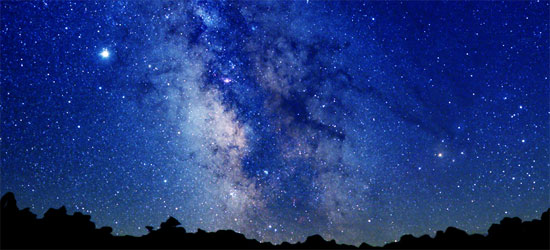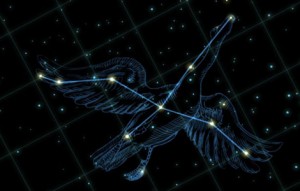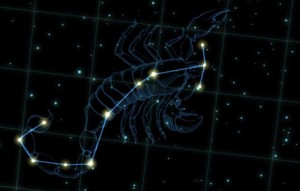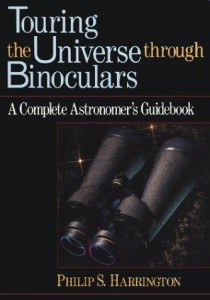Inspired by the Constellations & Milky Way…

…with just a pair of Binoculars
I was recently about to play a round of golf with a few friends and just before we tee’d off, I noticed that in the clubhouse window was a Cassegrain telescope and I made the comment that somebody must be using the relative seclusion of the golf club with it’s minimum amount of light pollution to view the stars at night.
My friends were not impressed. You see they never really give much thought to the stars, milky way and every thing else “up there” and assumed that if you did, you had to spend a whole heap of money buying specialist equipment like telescopes, which of course could much better be spent on golf clubs!
Myth
Sure telescopes will let you see further, but you do not need them to get excited by the night sky:
If you just take some time to think about it for a minute, our Earth, the planets of our solar system, our sun, billions and billions of other stars, and God knows how many other planets going around the stars are all part of the great Milky Way Galaxy which you can see with your naked eyes!
So when you next step out at night, just take a second to take in the sky. Remember every one of those stars you can see is a neighboring star in our home galaxy, the Milky Way. But to get the big picture of our home galaxy you should try and get out into the dark countryside where the sky is pitch dark and there’s much less hidden from our eyes.
Don’t just stand and look at the spectacle, really take it in by lying on your back and take in a deep breath. If you’re not at least a little thrilled by what you see, check your pulse! That’s when you can really see our Milky Way galaxy, that river of light across the sky and think of this – it is a thousand-light-years wide in thickness!
Remember stellar distances are measured in light-years because the numbers are so huge. One light-year, the distance that a light beam would travel in one year’s time, is just short of 6,000,000,000,000 miles. That’s 6 trillion miles! The thickness of that disk, Our Milky Way Galaxy is about 1,000 light-years wide, although the central disk that makes up the central bulge of our galaxy is about 6,000 to 8,000 light-years in diameter. But it’s diameter spans a colossal 100,000 light-years and you can see it all with you naked eyes. No telescope or even binoculars are necessary!
 If you are in the northern hemisphere, take a look midway down the band in the high southeast, look for what appears to be a formation of brighter stars that make up a sideways cross. That’s what is known as the Northern Cross, and while it’s not an official constellation all by itself, it’s the main part of the constellation Cygnus the Swan.
If you are in the northern hemisphere, take a look midway down the band in the high southeast, look for what appears to be a formation of brighter stars that make up a sideways cross. That’s what is known as the Northern Cross, and while it’s not an official constellation all by itself, it’s the main part of the constellation Cygnus the Swan.
At the top of the Northern cross is Deneb, this is one of the brighter stars in the sky and marks the tail of Cygnus the swan. The crosspiece of the cross makes up the main part of the wingspan, and the moderately bright star at the foot of the cross, Albireo, forms the head of the swan.
Now if you have a pair of binoculars with you, focus in on Albireo, and you’ll see that it’s not just a single star but two stars with contrasting colors. One of the stars has a bluish tint, and the other has an orange glow to it. These two stars are nearly 400 light-years away and are thought to take 100,000 years to orbit each other.
Now if you take your standard “daytime” binoculars and slowly pan all across the band of the Milky Way galaxy, you’ll see all kinds of celestial treasures like bright nebulae clouds, star clusters and dark rifts, especially on the southeastern side of the Milky Way band.
That area of the sky would be a whole lot brighter, except there are a whole lot of dark clouds of hydrogen gas and dust in the way. Some astronomers think that if it weren’t for all this in the way, that part of the sky would be as bright as the full moon all the time!
 At this time of the year, you can see two of the most recognisable constellations within the southern side of the Milky Way band. They are Scorpius the Scorpion and Sagittarius the Archer. Scorpius is one of the “nice” constellations that really does look like a Scorpion with three stars in a line that make up its head on the right side and the curved line of stars that make up his tail and stinger on the left. Nearly in between is the dark reddish star Antares at the heart of the scorpion.
At this time of the year, you can see two of the most recognisable constellations within the southern side of the Milky Way band. They are Scorpius the Scorpion and Sagittarius the Archer. Scorpius is one of the “nice” constellations that really does look like a Scorpion with three stars in a line that make up its head on the right side and the curved line of stars that make up his tail and stinger on the left. Nearly in between is the dark reddish star Antares at the heart of the scorpion.
Sagittarius the Archer is a lot harder to make out as it certainly doesn’t resemble what it’s depicted to be. In Greek mythology that constellation is supposed to be a creature with a man’s chest, head and arms with a horse’s rear end, tail and legs shooting an arrow at Scorpius. What I think it actually looks like is a teapot in the sky with four stars that make up the handle on the left side, and three stars on the right that form the triangular spout.
What ever you see, I hope that the next time you look up to the night sky, you take time to appreciate it all even with just your naked eyes or your standard binoculars.
More Information
If you want to get a little more serious, take a look at my article on how to choose Binoculars specifically for Astronomy.
 Books on Astronomy with Binoculars
Books on Astronomy with Binoculars

 Article | Posted by Best Binocular Reviews
Article | Posted by Best Binocular Reviews 
 Categories:
Categories:  Tags:
Tags: 
